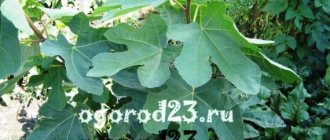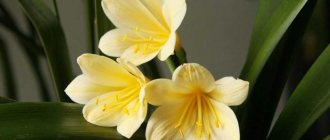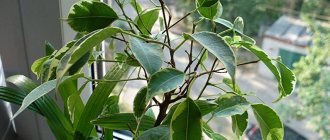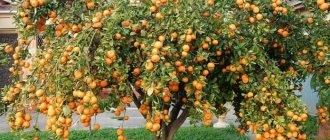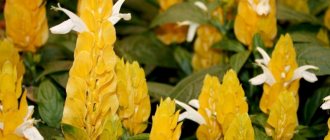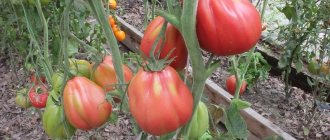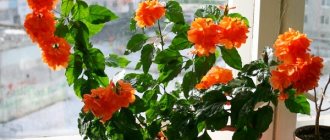Amateur flower growers not only grow familiar varieties of indoor plants on their windowsills, but also manage to harvest exotic fruits. In winter, you can grow fresh herbs and even some varieties of cucumbers at home.
If you wish, you can enjoy the harvest grown at home almost all year round. And the most unpretentious exotic fruit plant is rightfully considered the fig, or fig tree, also known as the savory tree. Unlike homemade lemon and coffee tree, this plant is not so demanding on the level of humidity, and it does not take up as much space as a banana. Another advantage is the ability of figs to bear fruit several times a year. Already 12-18 months after rooting the fig tree cuttings, you can harvest your first harvest!
Botanical features of the Fig plant
Anyone who has ever tasted fig fruits knows how delicious they are. But, in addition to their delicate sweet taste, they are also very beneficial for health. And here’s an interesting detail: it turns out that figs are a completely unpretentious plant. In addition, it can be successfully grown on a plot in the middle zone or in a house - in a container. And the most important thing is to get a harvest.
And perhaps we should start by studying its biology. Figs belong to the genus Ficus, of the Mulberry family. It turns out that both ficus and mulberry trees are related to it. In warm regions, figs grow into quite large trees or bushes up to 12-15 meters.
figs have light gray smooth shoots and rather large, three- or five-lobed, dark green leaves (remember that Adam and Eve covered them with a fig leaf). Already in the second or third year, the young plant begins to bear fruit. By the way, in private gardens, with good care, fruits, albeit small ones, can appear at the end of summer already in the year of planting.
Figs are a fruit tree known since biblical times.
And this is where the most interesting and unusual begins. In southern countries, for figs to bear fruit, pollination of its flowers is required. Pollination is carried out by small wasps - blastophages. They reproduce inside the male inflorescence and naturally attract a lot of pollen. Some of these “stained” insects crawl inside the female inflorescences. The pollen lands on the pistil and pollination occurs, and the figs set.
These fruits gradually grow and become juicy and sweet, large or small, yellow or blue, depending on the variety. But the trouble is, these same fig pollinators - blastophagous wasps - live only in warm regions where the temperature does not drop below zero. How then can we get a harvest in our latitudes? It turns out that many so-called parthenocarpic varieties, or simply self-pollinating ones, have been bred. These are the ones worth working with.
Is it possible to grow figs at home?
Growing figs at home is quite possible. Even in nature, a compact fig tree rarely grows higher than 2-2.5 m. In a pot, the plant reaches a height of no more than 1-1.5 m . It can also be made lower by shaping and pinching the growth point.
In order for the fig tree not only to grow in a pot on the windowsill as a green houseplant, but also to bear fruit, it is important to choose the right variety. Fig trees are divided into three types :
- requiring pollination;
- not requiring pollination (parthenocarpic);
- dispensing with spring pollination, but requiring autumn pollination (mixed).
For home cultivation, choose varieties that do not require pollination . Gardeners also recommend giving preference to low-growing options. They have a neat crown and are easy to shape.
The best varieties of figs for growing at home are considered:
- Solar;
- Sochi 7;
- Kadota;
- Purple Sukhumi.
Other varieties will also work, but if they require pollination, it will be extremely difficult to get the plant to bear fruit. Tall varieties of fig trees require frequent formation, are less hardy and more demanding in care.
Preparing fig cuttings for planting in open ground
First you need to get fig cuttings. This is not difficult to do now; on the Internet there are many offers from amateur gardeners who offer a large assortment of varieties. You just need to stock up on cuttings in winter, or in early spring - before the growing season begins.
The standard is considered to be a stalk 10-25 cm long, as thick as a finger, with 3–4 buds. But this is the standard, and in practice all sorts of cuttings take root. The ends of the harvested fig cuttings should be dipped in melted paraffin to reduce moisture evaporation, but you can do without this operation.
Next, the fig cuttings are wiped with a weak (1:10) solution of hydrogen peroxide (disinfected), wrapped in a damp (not wet) cotton cloth and placed in a plastic bag. A tag with the name of the variety (if known) and the date is attached to the bag with the cuttings. Place in the vegetable compartment of the refrigerator (temperature +4...+5 degrees) and store until spring. Periodically, once every two weeks, the cuttings are taken out and inspected. If mold appears, wipe it with diluted peroxide, and if the fabric is dry, moisten it a little.
Fig cuttings are ready for rooting.
When and how figs bloom
When a fig blooms, a pear-shaped (or round) berry, hollow inside, forms on its branches. This is the inflorescence. To see its flower, which is absolutely inconspicuous and tiny in size, you need to break this inflorescence.
Figs - care and cultivation in open ground, pruning
The formation of the first ovaries of inflorescences can be observed already in February, and it will be possible to enjoy the fruits only in June.
How to make figs bear fruit
To make figs bear fruit, you need to follow the following rules for caring for them:
- the pot with the tree should be located in a light-filled place;
- Do not allow too much space for roots in the container;
- in winter it is necessary to ensure that the figs do not freeze;
- watering the emerald beauty should be timely and moderate;
- the tree needs to be fed regularly;
- it is necessary to ensure that the flower is not affected by pests;
- The fig crown should be periodically thinned out by cutting off excess branches.
For your information! By following the rules above, you can get a good harvest of fragrant and tasty fruits twice a year.
Rooting fig cuttings before planting in open ground
At the beginning of spring, fig cuttings can be rooted. Freshen the bottom cut with a sharp knife and make a few shallow scratches at the bottom, cutting through the bark. For good rooting, it is worth keeping the cuttings for the time prescribed according to the instructions in a solution of any rooting agent. Although many varieties take root easily without this.
Now we place the fig cuttings in some breathable and moisture-absorbing substrate. Some people use calcined sand, but I use either sphagnum moss or, as this season, coconut substrate. The main thing is that it is not wet and water does not flow from it, it must be wet.
Any container can be used as a container, but with holes made for air exchange: a plastic container with a lid, a plastic bag, two plastic cups, a container with a glass jar, etc. The temperature for rooting figs is +22…+25 degrees.
We place the fig cuttings in some breathable and moisture-absorbing substrate.
After about a month, the first small roots appear.
After about a month (or maybe earlier), the first small roots appear. While they are small, the cuttings should be planted in a container with a loose and nutrient mixture. Overgrown roots easily break and the plant again spends time and effort growing new ones, so don’t delay.
Planting mix? Peat or coconut substrate plus garden soil. Fig cuttings are grown for about a month, and then, when the threat of spring frosts has passed (around May), after hardening, they can be planted in a permanent place.
Preparing to plant figs on the windowsill
To grow figs on a windowsill, you need to select seeds from the fruit, prepare a substrate and germinate. In the future, you will need a pot to transplant the plant to a permanent place.
Selection and preparation of planting material
Fig seeds are very small, compared to a match head, 5-6 times smaller, so special preparation is needed. Cut the ripe fruit into 2 parts, remove the seeds with pulp, and place in water for 3 days. Then rinse under running water through a fine strainer and dry on cotton cloth; after a day, start sowing.
Not a single fig has small seeds. If you decide to learn how to grow feijoa at home, study the main aspects, because the seed of the exotic fruit is also small.
Growing figs at home?
Not really
Germination of seeds
To germinate small fig seeds, it is necessary to create a greenhouse effect.
- Prepare a substrate from an equal amount of humus and sand, be sure to disinfect it with a weak solution of pale pink potassium permanganate (5 g per 1 liter of water).
- Then pour a layer of expanded clay (3-4 cm) on the bottom of the planting container, add the prepared substrate.
- Distribute the seeds evenly on the surface of the soil, lightly sprinkle with soil, then moisten generously with a spray bottle.
- Cover the planting container with polyethylene and place it in a bright and warm place (temperature +25 degrees) for germination.
- Every 2 days, check the condition of the seedlings, removing the polyethylene, and if necessary, moisten the soil.
Sprouting fig seeds may not suit everyone, but green onions can be grown in the window without any hassle. Find out how you will always have the necessary vitamins in your diet.
Watch also the video on how to soak seeds in humate:
Landing dates
Seeds are sown at the end of February, beginning of March. When the seedlings reach a height of 10-12 cm, around May, they form 4 full leaves. If the seedlings have sprouted densely, thin out by removing low and weak shoots. Then select stronger seedlings and plant them in separate 200 ml plastic cups.
Even cut-off plastic bottles are suitable for picking.
Choosing a place in the house
To ensure the full development of seedlings, place the cups on a tray, choose a well-lit and warm place (+22-17 degrees). Preferably a south or south-east window sill. If there is direct sunlight, cover the windows with curtains or blinds.
Choosing a place in the house is important not only for figs. Read where and how to store watermelons at home so you can enjoy the ripe berries even on New Year’s Day.
Choosing a pot and preparing the soil mixture
To determine seedlings for a permanent place (May-June), select a 0.5 liter pot and treat with a 1% manganese solution. Then place a layer of expanded clay or pebbles on the bottom, fill with substrate, leaving 5-10 cm to the edge. To prepare the soil mixture, mix 2 parts of rotted manure, 2 parts of turf soil, 1 part of sand or peat, add 1 tbsp per 1 liter of substrate. l. crushed ash. Be sure to process the prepared substrate by heating it in the oven for an hour. Before rooting, water the soil generously, carefully remove the seedling, and shorten the root by ⅓ of its length. Make a hole and plant the plant without deepening the root collar.
Planting figs in open ground: features of agricultural technology
And here I’ll make a small digression, again about the biology of figs. The frost resistance of figs greatly depends on the variety and growing conditions (how well the shoots are prepared for winter). But, on average, young bushes freeze at -10 degrees, adult bushes can withstand -15 degrees.
In principle - not bad, but risky even for the southern regions. Therefore, we can grow figs either by carefully and promptly covering them for the winter in open ground, or as a tub crop, putting them away in a frost-free room (basement) for the winter.
If you are going to grow in open ground, then know that the best insulation is the earth itself. Even frozen, it is still warmer than the outside air. Therefore, when planting, it is necessary to provide for the possibility of covering the figs. The most acceptable option is to plant in a recess, or more precisely, in a trench, which is located below ground level.
You should choose a place that is sunny and, preferably, protected from northern and eastern winds. Although figs are not picky about soil, the planting hole should still be made larger - 60x60x60cm and filled with a loose and nutritious mixture (peat, sand, humus, compost).
Seedlings should be planted in a hole slightly deeper than ground level, and immediately watered and mulched abundantly. There is no need to trim figs when planting. All care during the warm season comes down to regular and abundant watering, loosening or mulching the soil.
Note! When buying fig seedlings, it is better to choose two-year-old specimens with a pair of side shoots. The older the seedling, the more difficult it is for it to take root; the adaptation period is much longer. Seedlings with damaged roots or shoot bark should be discarded. There should be several buds on the shoots.
You should choose a place for figs in the garden that is sunny and, preferably, protected from northern and eastern winds.
Possible problems in growing figs
Problems with figs begin when the plant is not properly cared for. Like any plant planted in open ground, shrubs can be susceptible to diseases.
Attention! To avoid this, it is necessary to carry out scheduled pest control sprays. Monitor its condition and at the slightest sign of pests, take appropriate measures to combat them.
Why don't figs bear fruit in the garden?
In addition to the appearance of diseases and pests, a problem such as lack of fruiting often arises.
This is primarily due to the wrong choice of variety. For planting in the garden, it is necessary to select self-pollinating specimens. Wasps of a certain subspecies, which do not live in all regions, can cope with pollination of common types of figs.
Why do figs fall off?
Another problem that gardeners face when growing figs is fruit shedding. This phenomenon is explained by improper care of the bush. Lack of regular watering has a detrimental effect on the condition of the fruit.
The second reason may be the poor soil on which the bush grows. The situation can be corrected by regular feeding.
Following the advice of professionals will ensure a chic crown and abundant fruiting of figs
Although figs are considered unpretentious plants in terms of rooting and growth, young seedlings must be properly cared for. It is necessary to listen to the recommendations of experts, then the bush will reward you not only with thick and beautiful greenery, but also with a rich harvest of exquisite fruits.
Trench method of planting figs in open ground
To obtain fig tree fruits in latitudes atypical for the plant, it is recommended to plant figs in open ground in trenches. When planted in this way, the fig tree takes on the appearance of a shrub capable of producing one harvest of fruits of excellent quality.
Trench planting of figs in open ground and caring for the plant differ significantly from traditional cultivation in a pit. Preparing the trench. The length of the trench is calculated according to the following scheme: 2 meters for each plant. Width and depth depend on climate:
- The further north the plot is, the deeper and wider the trench should be. In the south of Russia, it is enough to dig one and a half to two shovels deep, and 50-70 cm wide. To the north, in the middle zone, the depth is up to one and a half meters, the width is at least a meter. The trench is located from east to west;
- In shallow southern trenches, holes are dug for seedlings every two meters, and a good layer of drainage is poured onto the bottom of the hole. The walls of the trench are often lined with boards. To better reflect light, the boards are whitened with lime. A layer of fertile soil mixture is poured into the holes on top of the drainage, the cuttings are planted, and watered. The result is a trench in which young trees grow every two meters;
- In the deep northern trenches, in contrast to the geometrically smooth southern ones, the walls are structured differently. The northern wall, perpendicular to the ground line, is reinforced with brickwork or boards. This wall should be white to collect and reflect sunlight onto the plants. The southern wall is flat. The slope should be such that the sun's rays pass to the very bottom of the trench. This southern gentle slope is covered with a black film; this is protection from weeds, which will inevitably cover the figs from the sun, and accumulation of heat from the sun;
The bottom is covered with a layer of drainage (at least 30 cm) and a fertile layer of soil. The trees are planted at an angle of 45°, the root collar can be slightly deepened. Tree trunk circles are mulched and watered; A series of arcs are placed over the trench to stretch the covering material, creating a greenhouse effect for cold spring nights.
Figs in Central Russia
There are several hundred varieties of figs in the world. From them you can choose those that will grow in central Russia. The only disappointment is the low probability of fruiting. This is explained by the fact that gall wasps are needed to pollinate fig flowers. And they live exclusively in a certain area. But there is a way out - it is necessary to plant and grow self-pollinating varieties.
Growing figs in open ground
Which variety to choose
To solve the problem of fig fruiting in those regions of Russia where the gall wasp does not live, breeders have developed fig varieties that are self-fertile.
Today there are many of them:
- Dalmatian;
- Nikitsky;
- Abkhazian purple;
- Crimean black;
- Shuisky;
- Gray early;
- Brown Turkey and others.
Gardeners in central Russia prefer Dalmatian figs, the cultivation of which does not bring any particular problems. Its fruits are very tasty, and it tolerates temperature changes well. Feels great even when the readings drop to minus 15°C.
The largest yield is produced on shoots 3-4 years old. On average, the fruits weigh from 150 to 200 g, have an asymmetrical shape and a greenish-yellow color.
Dalmatian Fig
Brown Turkey is characterized by the best winter hardiness. Can withstand short-term cold snaps down to minus 20°C. Fruits abundantly. The fruits are pear-shaped, weighing up to 100 g. The color is red-brown.
Suitable for the middle zone and Crimean figs. It bears fruit with oval-shaped fruits of a purple hue and weighing up to 100 g. Planting gives the best results in the Crimea, Stavropol and Krasnodar Territories, but in the central zone and the Moscow region it can also be planted in order to obtain tasty fruits. But breeding in Siberia is most often doomed to failure - it is better to choose another variety.
Technology for planting figs in pits
To plant figs in open ground, a planting hole is required, the depth and diameter of which are 1 m. The bottom of the hole is covered with a 30-centimeter layer of drainage made of large expanded clay, crushed bricks, and pebbles. The walls are lined with broken bricks, stones, pieces of concrete, rubble stone and other similar materials.
Note! This compaction of the pit walls ensures soil aeration, heat accumulation and limits root growth.
Planting figs in holes.
Part of the pit is filled with a prepared mixture of topsoil with humus, leaf soil, and compost. They pour out a bucket of water. When the water is absorbed, a seedling is placed on a layer of fresh fertilized substrate so that the root collar is at the level of the edge of the hole or slightly lower, and the hole is filled with earth, distributing the soil between the roots, compacting and tamping. The tree trunk circle is mulched with humus or compost and watered thoroughly. At least two buckets of water are required for the first watering.
Methods for planting fig seedlings
In a permanent location, seedlings can be planted in open ground (straight or inclined), in a hole or trench, or in a pot (for further growing indoors).
By the way! As for the planting scheme: if you are planting several seedlings, then the distance between the bushes should be at least 3-3.5 meters .
Landing in the ground
- Prepare and fill the planting hole with fertile soil mixture.
- Place a mound in the center (if you are planting a seedling with an open root system).
If you plant a seedling in a container, then you need to plant it on a flat surface.
- Plant a seedling. Place it on a mound and spread the roots down (in no case should they look up).
- As for the planting depth, it is advisable that the seedling be planted below ground level (in a hole). Only in this case will you be able to cover it most reliably for the winter, and the root system of the young seedling will definitely not freeze out.
However! You can try planting the seedling flush with the soil surface.
- Next, you need to fill the seedling with fertile garden soil and then compact it.
- Water abundantly (2-3 buckets). Wait until the moisture is absorbed. If the ground settles too much, add more soil.
- As a rule, immediately after planting you need to prune the figs (for more information on how to shape a young seedling, read the separate paragraph “Formation”).
Video: planting figs in spring
Inclined landing in the ground
It is not necessary to plant directly; you can plant the seedling obliquely (at an angle of 45 degrees, like currants); this way, in the future, you will simplify the task of bending and covering the branches for the winter.
At the same time, some summer residents advise burying the seedling below the root collar by 10-15 cm, i.e. so that there are 2-3 buds in the ground.
Landing in a hole (trench)
To ensure that figs do not freeze in winter, it is optimal to plant them in a hole (trench).
By the way! It is much better if there is also a greenhouse (greenhouse) above the trench.
Why is it ideally preferable to grow figs in the middle zone in a hole?
The fact is that it is much easier to cover and bend the shoots this way. In fact, the bushes will be located in the basement, where the temperature will definitely not drop too low (provided there is proper dry shelter) and the shoots will not freeze. Thus, this will guarantee that unfrozen ground will save you from freezing temperatures.
What dimensions should a suitable trench have?
A depth of at least 30, and preferably 50-60 centimeters, a width of 50-60 and a length of 2-3 meters.
For more information about the nuances of planting and growing figs in a trench (pit), see the video below.
Video: growing figs in a hole
Caring for figs in the open ground: shelter for the winter
With the arrival of the first frosts (but we are in no hurry, light frosts only harden the plant), we bend the fig branches to the ground, or better and more securely, we place them in a trench dug in advance, when planting. We fix it with wire to the hammered stakes and cover it with any more or less durable sheet material. Slate, plastic, chipboard, boards and even cardboard are suitable. And cover the top with a 15-20 cm layer of earth.
Figs, even in the southern regions of Russia - Krasnodar Territory and Stavropol Territory - require mandatory shelter for the winter.
If you are going to use polyethylene film, then keep in mind that in the event of a thaw, the figs may rot, and mice will overwinter under dry shelters (and spoil the figs). For the convenience of shelter, it is worth removing perennial branches that are difficult to bend, or leaving them uncovered. Maybe you'll be lucky and they won't freeze.
Bush formation
To properly form a plant, you need to understand how figs grow.
To create a compact shape, you need to build a trellis from wooden slats or ordinary wire. A bush will be tied to it.
In the first year of development, when pruning, three upper shoots 20 cm high are left. One of them is launched vertically, and two lateral ones are tied to a trellis. The result is a kind of trident.
When the stems reach a height of about a meter, they are bent parallel to the ground. Further growth of the stems is started vertically and tied to ensure precise angles.
Next spring, the trunk, which is located in the middle of the bush, is cut 20 cm above the point where the branches appear. Then we repeat last year’s procedure.
To properly form a plant, you need to understand how figs grow.
In this way, the plant needs to be grown to 4 tiers of branches. At the last stage, only two branches are left, which run in different directions parallel to the ground. When they grow 10 cm, they are allowed to grow vertically.
As a result, you get a neat, compact bush that can become a decorative element of the landscape. For example, near garden paths.
How to care for figs in the garden
Already in the spring, at the beginning of May, when the threat of return frosts has passed, we open the figs. The shoots themselves, and quite quickly, straighten out; uncovered and frozen shoots should be removed immediately. If you covered several branches and they overwintered, then most likely you and your family will have a harvest.
True, it is worth knowing that figs in the hot summer require abundant, almost daily, watering. Then the fruits set and ripen well, and the plant accumulates enough necessary substances for wintering. If there is a lack of water, the fig drops its fruits, but after a drought the bush quickly recovers.
Caring for figs in unprotected soil involves a standard set of measures.
Frequency of watering figs
During the rooting period of the cuttings, the plant requires frequent and abundant watering: twice a week with a bucket of water. As soon as the tree begins to grow and adapt, it needs to be watered at least 10-12 liters once a week throughout the summer. In hot, dry times, the frequency of watering increases as necessary, up to three times a week: the soil should not be allowed to dry out, because this will negatively affect the quality of the fruit.
Note! Watering should be stopped completely when the fruits on the tree ripen.
Pruning and crown formation
When caring for figs, special attention should be paid to pruning. In the southern regions, pruning is performed 2 times a year - in autumn and spring. Depending on the shape of the fig bush, the crown is formed. On bush figs, during the first two years, a pair of main branches with a trunk length of about 40 cm are left.
The crown of a standard tree is formed from 3-4 main branches, but the length of the standard must be within 60 cm. The cut areas must be covered with garden varnish to prevent the entry and spread of infection.
In the first year, formative pruning is carried out. From a young tree you need to select the main strong branch, and cut the rest to the base. After a year, cut the branch, located at a height of about 1.3 meters, into a bud. The result will be a semi-standard form, and skeletal branches will form in the spring. In the third year, the branches facing outward are shortened by half.
In the future, after the formation of the tree skeleton, pruning is not required, with the exception of unsuccessfully growing branches. In summer, it is recommended to pinch out growths, this will prevent the tree from growing in height. For the winter, the fruit plant is insulated or covered with earth.
How to grow figs in a container
If you still don’t want to take risks and try to grow figs in open ground, but want to get a guaranteed harvest (twice - in spring and summer), then try growing them in a tub. A 10-15 liter bucket will do (the larger the better). It is necessary to make holes in it for water drainage and fill it with a loose and nutritious mixture.
The first figs on my container figs this year appeared in March.
From May to September–October, figs are kept outside in a sunny place, not forgetting to water regularly. With the onset of cold nights, it is brought into a warm, bright room (placed on a south-facing window sill) and the autumn harvest is given the opportunity to ripen. At the beginning of winter, they are removed to a cold basement, where the figs must spend at least two months, resting and gaining strength. And already in February you can bring it into the warmth of your home again and by May you can wait for the first figs.
The figs do not ripen at the same time and are harvested gradually. When fully ripe, they seem to lose a little elasticity and become soft. These are the most delicious fruits collected from their bushes. After all, they have reached maximum ripeness, and for sale they are removed a little in advance, and they ripen on the shelves.
By the way, in the southern regions, figs, due to their foliage and size, are also an ornamental plant, but in our latitudes this advantage can only be used during the warm period. In winter, all these mounds of earth will not add decorative value to your garden. And not everyone can carry a tub into the basement.
In general, decide for yourself. And I grow figs this way and that, and all because of their delicious fruits. Moreover, they are eaten fresh, dried (dried), canned, made into jam and jam.
Necessary conditions for successful cultivation of figs
Figs are a very heat-loving subtropical crop with a long growing season (200-220 days), which requires a lot of heat for normal fruiting (fruit ripening and shoot ripening). Namely, the CAT-sum of active temperatures (the sum of average daily air temperatures exceeding +10 degrees) should be equal to 3500-4000 degrees .
In other words, the SAT (sum of active temperatures) of your area should allow the crop and wood (shoots) to ripen.
Accordingly, you will hardly be able to get a full harvest in the conditions of the Middle Zone (Moscow region), when grown in open ground, where the average SAT is 2000-2500 degrees.
Therefore, in the middle zone , in order to get a more or less good harvest, it is better to plant and grow figs in a trench, greenhouse or greenhouse .
The Rostov region and eastern Ukraine are much more suitable for growing figs (SAT - 3000 degrees or more).
Of course, figs can be grown with great success in the same Stavropol Territory, in the Kuban (Krasnodar Territory), in southern Ukraine, in the Crimea, where SAT is exactly 3500 degrees or more. Moreover, the most ideal conditions are the southern coast of Crimea and the Black Sea coast of Kuban.
Interesting! Figs can produce two harvests per season: the first (on last year’s shoots) in the summer (larger), the second (on new shoots) in the fall.
However, this is the case under normal growing conditions and proper shelter; in the conditions of the Middle Zone, you will only be able to ripen one crop.
Advice! If the second harvest does not have time to ripen, then the figs can be covered along with their pea-shaped fruits. Next year this will be your first harvest.
When do figs begin to bear fruit?
As a rule, already in the second year after planting.
Can I grow it in a pot at home?
Figs can be grown as a pot crop. You just need pots of sufficient capacity (at least 10 liters), almost any substrate (ordinary garden soil will do) and the ability to give the fig a dormant period in winter (after it sheds its leaves in November). Namely, keep it for 3 months (from December to February) in a cool place - a cellar or basement.
As for the growing conditions, as already mentioned, figs are heat- and light-loving, so they must be placed on a southern windowsill. It also adapts well to dry room air.
Video: how to grow figs at home
Diseases and pests of figs
The most common diseases of figs include the following ailments. Branch cancer. The bark becomes covered with numerous cracks and dies, exposing the inner layers of wood. The causes may be mechanical or thermal damage to the bark, which has become a haven for fungi and parasites.
Pay attention to personal experience! During all this time, I have not encountered any pests or diseases on figs, which means I have not carried out any chemical treatments, although gardeners I know periodically send with alarm photos of some pests inside these fruits.
Prevention and treatment require timely pruning (especially careful sanitary pruning in the fall), providing trees with phosphorus-potassium nutrients, preventing burns from the first rays of spring (painting with lime or milk of lime);
Gray mold is the result of exposure to heavy rains, which contribute to the spread of the fungus. The source may be fruits not removed from trees or the ground in the fall, or diseased leaves. For prevention, sanitary pruning and harvesting of all fruits are necessary. Treatment with fungicides, Bordeaux mixture, iodine (10 ml per 10 liters of water), preparations such as “Horus”;
Fusarium fruit blight is a practically incurable fungal disease. For prevention, autumn and early spring treatment with fungicides and high-quality sanitary pruning are required; Anthracnose. The best conditions for propagation are high humidity at high temperatures, that is, greenhouse conditions. Fungicides are used for prevention and treatment;
Souring of fruits. The fruits become colorless or pinkish and watery inside. Figs are attacked by pests: moths, leaf rollers, psyllids, and pine beetles. To control pests, special preparations are used (Durban, Furafon). Maintaining garden hygiene (cleaning up carrion, burning diseased plant debris) will be an excellent preventive measure.
Pests
The following pests can attack the bush:
- A moth that can cause fruit to rot.
- The leaf roller, which is considered a pest of honeysuckle, damages the bush in such a way that the leaves turn yellow, the fruits begin to rot, and the stem itself dries out.
- The psyllid threatens to slow down the growth of the stem due to the lack of nutrients sucked out by the pest.
- The pine beetle damages the bark, which often leads to the death of the plant.
Moth moth can cause fruit to rot
To control pests, it is necessary to use special insecticides, and various fungal diseases can be overcome by normalizing the climatic watering regime and careful care.
Propagation of figs by cuttings
The main method of propagating a fig tree is cuttings. When propagated by cuttings, the first harvest can be collected within a year.
Note! When choosing branches for cuttings, preference is given to mature shoots that have at least 4 internodes.
Cut from below at an angle, a centimeter above the bud. The upper cut is made evenly, perpendicularly, a centimeter up from the bud. The cuttings are placed in warm water to speed up the release of milky juice. For the same purpose, the cuttings are kept in a cool (and dry!) place for about 6 hours. After the cutting has sap, its lower edge is cut and scratched longitudinally to stimulate root formation. Then the cuttings are placed in water with the addition of a root formation stimulator. After growing a good root system, the cuttings are planted in open ground.
How to propagate homemade figs
The subtropical resident is bred at home with seeds, cuttings and root shoots.
Seeds
The seed method is the most labor-intensive. To obtain planting material, select a soft fruit, remove the pulp with seeds, mash it with your hands and lay it out on paper to dry for 24 hours. When the seeds are dry, collect and place in a paper bag. Store planting material in a dark and cool place. Shelf life 2 years.
Cuttings
It is better to propagate figs by cuttings in mid-winter. For this purpose, select woody branches of an adult tree 5-6 years old. Divide the mature shoot into cuttings at least 15-20 cm long with 3-4 internodes. In this case, make the lower cut obliquely 2 cm below the last bud, and straight at the top. To stop the cuttings from releasing juice, leave them to dry. To destroy the upper layer of bark, make longitudinal scratches in the lower part and place them in Kornevin’s solution (growth stimulator). This procedure promotes the formation of the root system.
Place a drainage layer of expanded clay (2-3 cm) on the bottom of the prepared container, add loose fertile soil (7 cm) and add moistened sand (4 cm). Remove the cuttings from the stimulant solution, rinse with water, sprinkle with crushed ash and place in the soil. Cover the container with polyethylene and place in a warm place (+ 25-27 degrees). Periodically water the soil and ventilate the seedlings by removing the coverings. After 1-2 months, transplant the cuttings into separate pots filled with a drainage layer and prepared soil from an equal ratio of sand and turf soil.
Useful video on how to properly water a cutting
Root growth
Figs also reproduce by root shoots. Bend the shoot to the ground and cover it with soil. After three weeks the plant will take root. Water the soil to saturate it with moisture. Then carefully separate the fig shoots from the mother plant and plant them in a previously prepared pot of soil.
Properly planted figs will bear fruit over time, but what to do if you already have harvested peas. Find out how to properly freeze peas for the winter so they don't spoil.
Propagation of figs by seeds
Propagating figs by seeds is a labor-intensive and time-consuming process. It will take 2 years from germination to planting in open ground, during which the fig tree should grow at home.
Note! You can grow figs from purchased seeds, but many tips include a warning: the seeds must be fresh.
To get your fig seeds, choose the most ripe fruit, remove the pulp from the peel, put it in a bowl and leave it in a warm place for 4-5 days. Afterwards, the seeds are selected from the fermented mass, cleared of any remaining pulp, washed of juice and dried. Fig seeds are sown in February. For germination, use a plastic container to create a greenhouse effect. The seeds are sown in soil made from humus, sand, turf soil, and planted to a depth of 0.5 cm. For three months, while waiting for the figs to sprout from the seeds, the soil is sprayed and ventilated. The emerging seedlings are grown up to 8 leaves, after which they are planted in separate containers, the diameter of which must be at least 10 cm.
Seed method of propagation of figs.
The plant winters indoors for two years and spends the summer outdoors. Regular watering and periodic feeding are the basis for caring for homemade figs. Two-year-old trees are planted in open ground.
Methods for planting a fig tree
A fig tree can be grown in several ways - from seeds and cuttings. Next, we will consider each of the methods in more detail.
Growing from seeds
Seeds can be purchased at flower shops, or you can make your own from fresh or even dried figs. Only ripe fruits (maybe even spoiled ones) are suitable for harvesting seed material. A tree grown from seeds will be more resistant to pests, but will begin to bear fruit much later, only in 4-5 years.
Wash the fig seeds and soak in water or wet gauze for two days. Plant the swollen achenes for germination in trays with river sand. Place the trays in a bright, draft-free place. After a few weeks, the achenes will germinate and the first shoots will appear. When the sprouts reach 3-4 centimeters in height, they can be planted in separate pots with permanent soil (regular flower soil with added sand).
Cuttings
Select a semi-lignified shoot from an adult plant and cut it obliquely under the bud with a sharp knife. Count three buds up and shorten the cutting from the top with a straight cut. If there are leaves on the resulting planting material, shorten them by a third - this will preserve more nutrients and speed up the development of new roots.
Stick the cuttings into containers filled with damp river sand. Plastic cups or yogurt trays are suitable for rooting. Before adding sand, check if there are any food residues left on the walls of the trays, otherwise they will contribute to the growth of bacteria and rot. Place a thin transparent polyethylene bag over the planted cuttings. Within a few days, the first roots will appear on the cuttings, and after a month they can be transplanted into pots. It is best to root figs using cuttings in mid-spring, but when young shoots (at least 8 cm) appear at the trunk of the plant, they can be separated at any time of the year.
Varieties of figs for open ground
The main criteria for choosing a variety are frost resistance, ripening time, yield, size and taste of the fruit.
Note! The further north the growing region, the more important it is to choose self-fertile varieties, since in cold latitudes there are no insects capable of pollinating figs.
Among the self-fertile varieties of figs, the following are most popular:
- “white Adriatic” with yellow-green fruits at the stage of full maturity, the flesh of which is colored pink;
- “Dalmatian” (“dalmatika”) - a cold-resistant fig with pear-shaped gray-green fruits with a sweet and sour taste;
- “Kadota” - berries with the outlines of pear fruits, sweet, cold-resistant variety;
- "Brunswick" - long-fruited;
- “tiger” - striped fruits with a sweet berry taste;
- “Turkish” - frost-resistant.
Fig variety for open ground.
Of course, growing figs in unusual conditions is a labor-intensive process that requires patience and strength. But if we put aside doubts about success and uncertainty about our capabilities, then tasting the fruit of a fig tree grown with our own hands is a completely doable task.
Try planting figs in the middle zone. It's real! It’s even easier than growing grapes, and grapes are now grown in the North.
Varieties of figs for home cultivation
For a guaranteed result, purchase ready-made seeds from a special flower shop or online store. You can also buy ripe or dried fruit at the market, then choose the seeds.
The following self-pollinating species are suitable for home cultivation:
| Variety | a brief description of | Fruit | Note |
| Dwarf | Self-fertile shrub | Small, elongated, brown-purple berries | Ideal variety for growing in pots |
| Kadota | Mid-season, self-fertile shrub | Berries weighing 60 g are green, pink flesh with a sour taste | Productivity 2 times a year |
| White Adriatic (Sochi) | Self-fertile early | Sweet berries of yellow-green color weighing 60-70 g | Fruiting 2 times |
| Dalmatian (white) | Self-pollinating, early | Green berries weighing up to 130 g, pink juicy pulp with sourness | High yielding |
| Crimean black | Self-fertile, early ripening | Berries of dark purple color with a pleasant sourness | Ideal for indoor growing |
My dears, there are Italian self-fertile species Verdino, Broginotto nero, Lardaro and Date Neapolitan. If you are lucky enough to buy this variety in the supermarket, take it without hesitation.
There are varieties of figs for growing on a windowsill, and there are special varieties of watermelon. Read how to plant a watermelon with seeds of hybrid species and get a small tower on the window.
Conditions for growth
Having planted figs, the cultivation of which requires complex care, you should worry in advance about sufficient light for the development of the plant; in the spring and autumn, watering is done as necessary; during the growing season, it is important to apply mineral and organic fertilizers.
In the case of lush growth of the crown, compulsory pruning measures (carried out in autumn or winter) are mandatory; during this process, many young shoots are left, ensuring abundant fruiting.
Description and types of culture
This favorite delicacy can be grown in your garden.
Figs, also called fig trees, are a member of the ficus genus of the mulberry family. Despite the fact that this is a subtropical shrub, it also grows successfully in cold latitudes - in eastern, central and western Europe. Figs are resistant to low temperatures; some of their species can withstand frosts down to -20°C. This crop is grown not only in open ground, but also at home.
Flowers develop in generative shoots located in the axils of the leaves. This only applies to female plants. After a certain period of time, the flowers are replaced by infructescences. As they develop, their size increases and their shape takes on the shape of a pear. There are seeds inside the fruit. Many fig varieties can be harvested twice a year. Breba (first harvest) ripens by early summer. The second fruiting begins in the first half of autumn.
Varieties of figs
Not all fig varieties are suitable for growing in cold regions. To make the right choice, you need to familiarize yourself with their varieties in detail. So, the most popular types are the following:
- Brunswick is an early variety. The fruits of this fig have an elongated shape and a burgundy-greenish color.
- Brown Turkey is a variety recently created specifically for growing in cold areas. It has a dark brown color.
- Dalmatica is a late variety with good frost resistance. Its fruits can be recognized by their green color and pink flesh.
- Tiger fig is an ancient variety. Its peculiarity is the appearance of the fruits - they are distinguished by a yellow-green striped color. The pulp has a rich red color and tastes vaguely like strawberries.
- Chicago Hardy - has high frost resistance.
- Madeleine de Deux, violet Bordeaux, Violette de Bordeaux - French ancient varieties. They are distinguished by early fruiting and grow successfully in areas with cold climatic conditions.
- Kadota is a green fig with excellent taste.
Varieties in the photo
Madeleine de Deux variety is an excellent healthy delicacy
Brown Turkey is suitable for growing in cold regions
Brunswick is a popular fig variety with juicy fruits.
Dalmatian figs are used by many cooks
Tiger fig is a rare variety, for which it is more valued by gardeners
Chicago Hardy is not only tasty, but also very healthy
Kadota figs have a rich aroma
